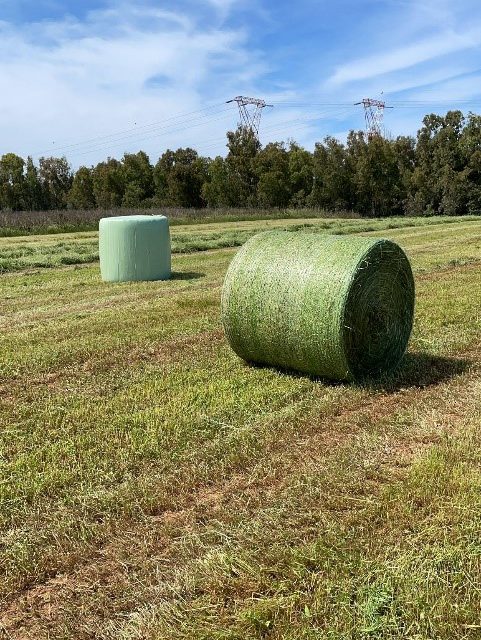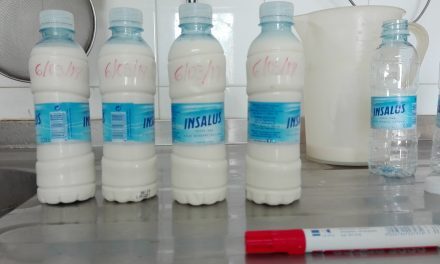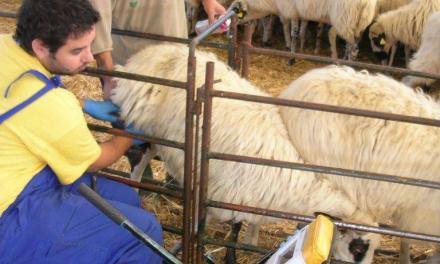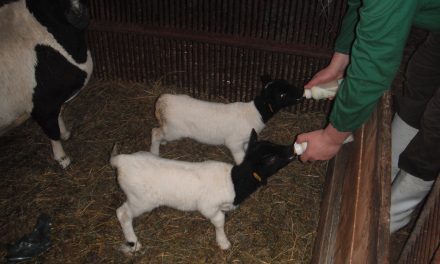This post is also available in:
![]()
![]()
![]()
![]()
![]()
How to produce high-quality grass-silage
Solution name: How to produce high-quality grass-silage
Aim: Improvement of the quality of conserved forage and animal nutrition.
Description:
The uneven distribution of rainfall in the Mediterranean environment during late spring can make it difficult to harvest good quality dry hay. Bailed silage is forage that is packed at higher moisture than forage to be stored as dry hay – between 40% and 60%. It takes one-half to one-third of the drying time of hay, from 13 to 20 hours, which allows a quicker operation than traditional harvest dry hay, limiting, in the meantime, the adverse effects of rapid change in weather conditions. The high moisture and lack of air within the sealed bale promote fermentation, which preserves forage quality.
Wrapped grass silage bales, also known as baleage, may be produced from any forage, grass or crop that would be used for conventional silage, cultivate at both autumn and spring seeding time.
Topic: nutrition
Production: Dairy / Meat
Animal Category: Adult / Lamb / Replacement
Issue: Conserved forage production (hay, silage…)
Level of Solution: Practical
Country: Italy
How to implement it
The production steps are as follows:
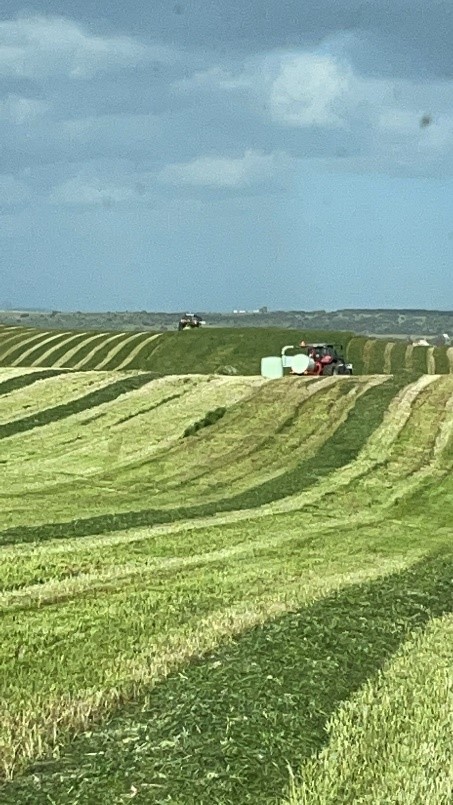 |
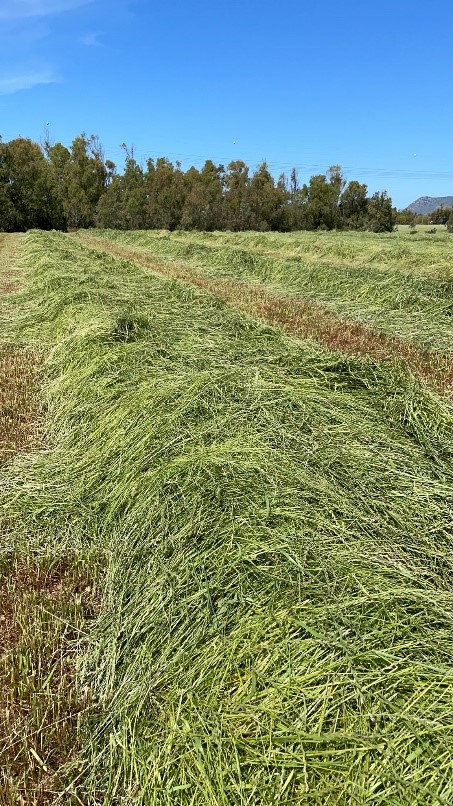 |
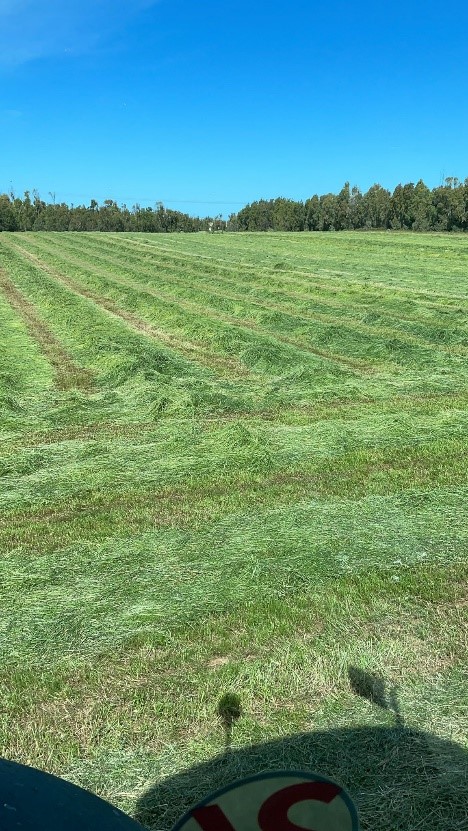 |
 |
Cutting:
Harvest high-quality early maturity forage, which has a higher sugar content for good fermentation: from bud-stage to less than 50% of blossoms (early-bloom stage) in legumes, and from elongation phase to seedhead emergence in grasses. Mow forage in the late morning or early afternoon, when the dew has dried off, at a cutting height of 8/10 cm to reduce the foreign materials into the biomass.
Wilting period
The mown crop should wilt in less time as possible reaching biomass humidity of 40% DM (dry matter) in grasses, 40% – 50% DM in legumes.
Windrowing
Mow forage into wide thin windrows for exposure to sunlight while wilting. Before baling, the moisture of the biomass must be monitored to be sure that the right DM content has been achieved (forage moisture content in the windrow could be determined through a microwave method or a bale probe equipped with a plate).
Baling:
It is advisable to utilize a silage-type baler with variable-size bale chamber, which allows obtaining a hard-core baler. The density of the bales must be high to avoid the infiltration of air during storage. It is important to adjust the speed of the baler so that the collected hay is evenly distributed inside the chamber from the beginning of the bale formation. Most balers have cutting attachments that slice the forage as it is being baled. Slicing aids in fermentation and improve bale compression. Use a lactobacillus bacteria inoculant to improve fermentation. The proper inoculation reduces dry matter loss with varying degrees of effectiveness. The bales should be dense, without air pockets and well-shaped.
Round-Bale Wrapping
Bale-wrapping equipment machine is used directly in the field or on the farm. The plastic film must have a 50 percent stretch factor, be resistant to ultraviolet light, have good tear strength and be able to adhere well. It is preferable to use film of 75 cm width respect of 50 cm, to improve airtightness, reduce wrapping times and increase the protection of the most delicate flat faces of the bales. Films are in light-colored plastic, more resistant than in darker colors. The darker plastic breaks down faster in the summer heat and sun, making it more permeable to oxygen. Silage bales should be wrapped within 3 hours after baling using six-eight wraps per bale.
Storage
Gentle handling of bales before and after wrapping using suitable handling equipment is essential in order to maintain the shape of the bales and the integrity of the seal provided by the plastic film. Repair tears and holes to prevent spoilage and secondary fermentation using transparent silicone rather than using adhesive tape, which is not very effective in obstructing the entry of air. Store bales in a clean, relatively level area with no sharp stones. Stack bales to reduce sunlight exposure to save plastic and reduce sweating.
Expected benefits
Production of conserved forage of higher quality
Cost Benefit analysis
The production of high-quality grass silage is expected to increase the profitability of dairy farms due mainly to the increase of incomes and the reduction of costs related to the supply of concentrates that largely compensate the increases of man-power and equipment.
Sustainability analysis
The improvement of the feed-efficiency and the feed-self sufficiency is expected to have a positive impact on the emissions.
Other positive impacts are expected on the animal welfare, farmer “image”, work environment and physical labour.
Prerequisites and/or limits
Adequate machine park. Moisture meter for fodder with swath plate. Spraying barrel for ferments positioned on the packing machine.

